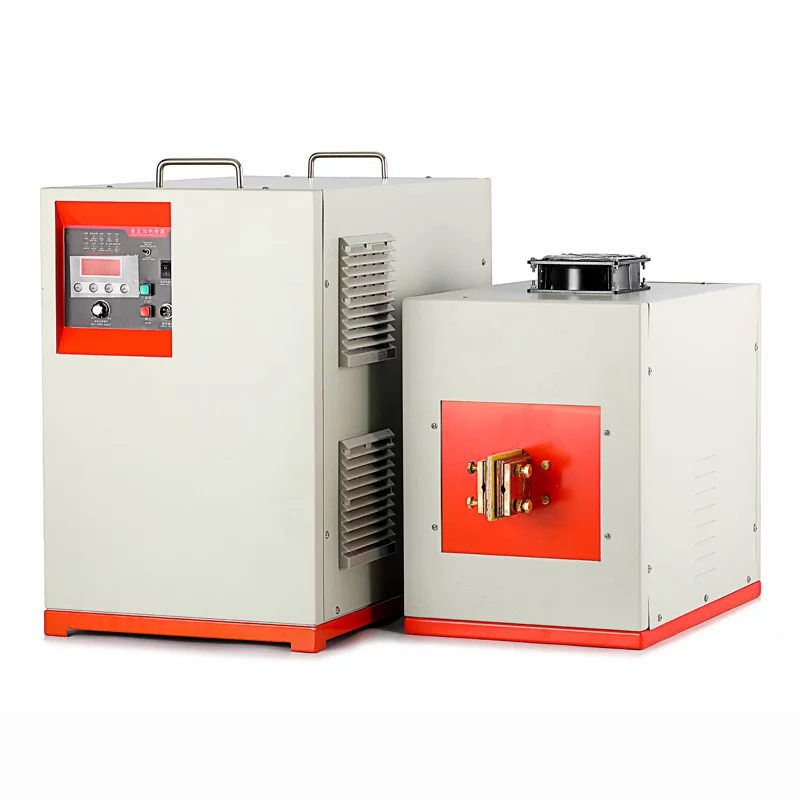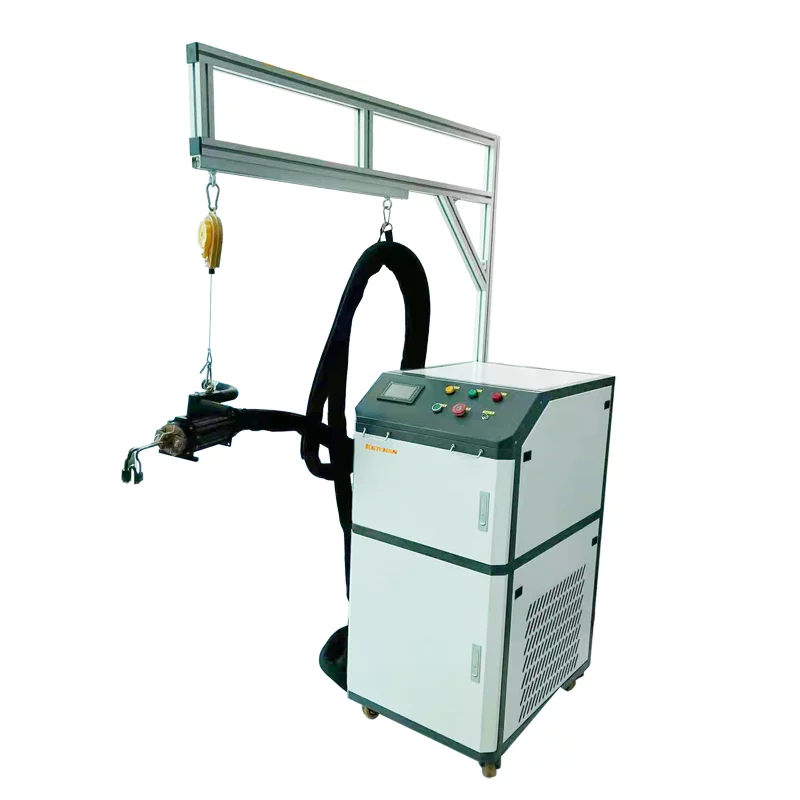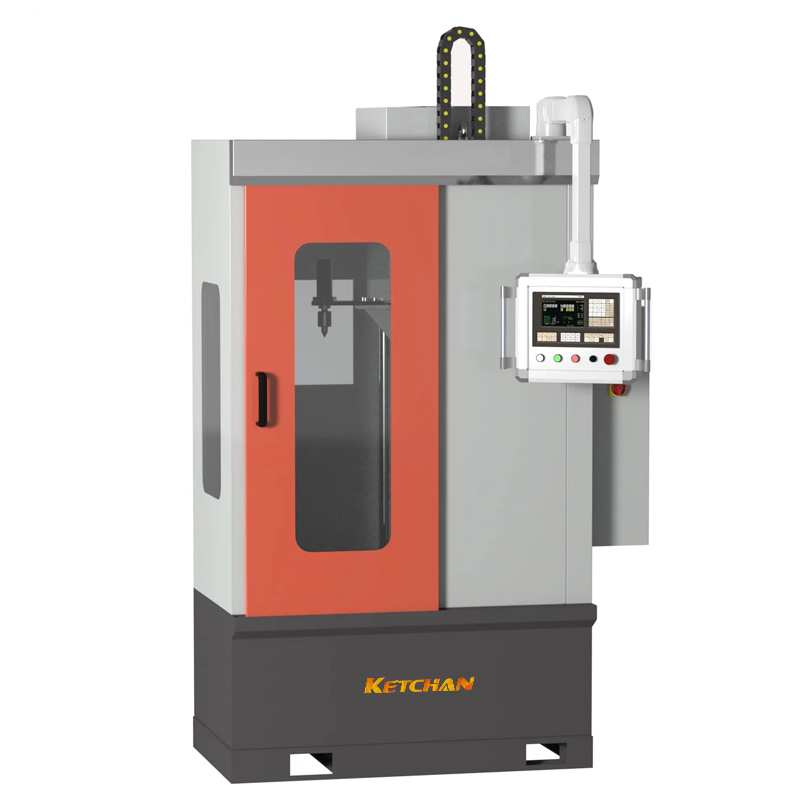Refractory lining is an important component of the crucible induction furnace, which affects the melting function of the furnace, the metallurgical quality of steel, especially the safety of operation. As the crucible induction furnace is suitable for the melting of various cast alloys, such as cast iron, cast steel, copper alloy, aluminum alloy, and zinc alloy, etc., a small induction furnace, furnace lining can be purchased to form the prefabricated crucible. In the actual production, the crucible induction furnace used for casting steel is usually built and sintered by the foundry, which selects and selects suitable refractory materials according to the varieties of smelting alloy.
1.Suitable for steelmaking furnace lining refractory
With the development of induction furnace applications in the cast steel industry, since the 1980s, the application of aluminum-magnesium spinel furnace lining materials has been gradually paid attention to. At present, the crucible induction furnace used in the cast steel industry in various industrial countries basically adopts spinel furnace lining.
In recent years, some steel casting enterprises in China have adopted spinel furnace lining materials, among them, some manufacturers are to buy foreign manufacturers pre-prepared materials, although the use effect is very good, the production cost is increased a lot, and the characteristics of it are not very understanding. Here, I mainly want to introduce some characteristics of spinel-type refractory lining for the reference of colleagues in the industry when they makeup lining materials and further improve lining materials. At the same time, in view of the current silicon sand lining, magnesia lining, alumina lining in China’s cast steel industry are also applied, also by the way to make a brief introduction of the characteristics of these materials, for reference.
(1) Silica sand lining
The furnace lining built with silica sand as the basic refractory material is often called acid furnace lining. Silica sand has many advantages: firstly, it has abundant resources and low prices; moreover, the crucible made of silica sand as the basic refractory material still has good strength at the high temperature close to its melting point and has good resistance to quench and heat. In particular, it should be mentioned that the quartz phase change expansion of silica sand can make up for the volume shrinkage in the sintering process, so as to improve the density of the sintered layer and reduce the porosity in the sintered layer. Therefore, silicon-based lining materials are widely used in the crucible induction furnace used for smelting all kinds of cast iron in the casting industry of various countries.
However, SiO2’s low fire resistance basically cannot adapt to steel temperature. Moreover, SiO2 has strong chemical activity at high temperatures, and it can interact with all kinds of alkaline oxides and even neutral oxides in the process of steelmaking. For example, FeO is easy to generate Fe2SiO4 with a melting point of 1205℃ after contacting with silica sand, which can further interact with SiO2 or FeO to generate eutectic components with a melting point of 1130℃.In addition, SiO2 may be reduced by some active elements in the molten steel. Therefore, silica sand lining used in steelmaking, neither the metallurgical quality of steel nor the life of lining can be guaranteed. Since the late 1980s, the industrial countries with induction furnace production of steel casting foundry, no longer use silica sand lining. As far as I know, there are still some enterprises in China using silica sand furnace lining to melt cast steel, which is in urgent need of improvement.
(2) Magnesia lining
The commonly used lining material is metallurgical magnesite with MgO content of more than 86%, which is made from magnesite after high-temperature calcination. If metallurgical magnesia is remelted in an arc furnace, the content of impurities such as SiO2 and Fe2O3 can be reduced, and the electrofused magnesia with higher purity (MgO content above 96%) can be obtained. Fused magnesia is used for the lining of a vacuum induction furnace.
Metallurgical magnesia has high refractoriness and is a conventional lining material for alkaline arc furnace. Although its melting point is very high, it is not easy to be sintered and its expansion coefficient is large, the thick lining of arc furnace can make up for this deficiency by adding a large number of bonding materials and tying with a wet method.
If metallurgical magnesia is used as lining material for an induction furnace, it is not suitable to use wet knotting because of the thickness of the lining, and the negative effect of these shortcomings is very obvious. Crucible made of magnesium oxide is prone to cracking, especially in intermittent operation of the furnace.
(3) Aluminum oxide lining
Alumina and zirconium sand are both neutral refractories, of which alumina is the most widely used, and zirconium sand is rarely used as a lining material.
Alumina alone is used as a lining material, which has a strong ability to resist cracking and prevent the erosion of acidic slag, but not suitable for making alkaline slag. Moreover, because of its high refractoriness and poor sintering performance, lining life is not very high.
(4) Spinel furnace lining
Spinel minerals have the characteristics of homomorphism, with many varieties and complex components. Its molecular formula can be written as M2+O•M3+2O3. In the formula, M2+ represents some divalent metal atoms, such as Mg, Fe, Zn, Mn, etc.M3+ represents some trivalent metallic atoms, such as Mg, Fe, Zn, etc. Thus, it can also be written as (Mg, Fe, Zn, Mn)O•(Al, Cr, Fe)2O3.
In the divalent metal atoms contained in spinel minerals, Mg2+ and Fe2+ can be substituted with each other in any ratio; Al3+ is in the majority of the trivalent metal atoms, but Cr3+ can replace Al3+ in any proportion, while Fe3+ can only replace Al3+ or Cr3+ to a certain extent. Common spinels include the following:
MgO•Al2O3 FeO•Al2O3
Chromite (ferrochrome spinel) FeO•Cr2O3 magnetite (ferrospinel) FeO•Fe2O3
Magnesium iron spinel (Mg, Fe)O•(Al, Fe)2O3 ZnO•Al2O3
MgO•Cr2O3 Zinc iron spinel ZnO•Fe2O3
Manganese chromium spinel FeO•Cr2O3 manganese aluminum spinel MnO•Al2O3
At present, MgO•Al2O3, commonly referred to as’ spinel ‘, is the mainlining material used in the induction furnace for steelmaking in various industrial countries. In pure magnesium aluminum spinel, MgO content is only 28.2%, but it is still an alkaline refractory.
Magnesia-alumina spinel material has high refractoriness, small coefficient of thermal expansion, good thermal stability at high temperature, and strong resistance to alkaline slag erosion. In particular, MgO and Al2O3 have a volume expansion of 7.9% in the sintering process of spinel, which can make up for the volume shrinkage in the sintering process and reduce the porosity of the sintered layer, which is consistent with the important advantages of silica sand lining.
Magnesium aluminum spinel basically has no natural mineral, is by the artificial synthesis, the preparation method has the electric melting and the sintering two ways. In 1997, China’s metallurgical industry formulated YB/T 131-1997 “Sintered Magnesia aluminum spinel” industry standard according to the specifications of Alcoa Chemical Company MR66 and AR76 materials.
Spinel lining material, in fact, not all is composed of spinel, but on the basis of granular Al2O3 or granular MgO style materials, among them with the corresponding powder, or fine granular spinel material formation, evenly distributed between the granular refractory materials, sintering process in alumina particles formed between magnesium aluminate spinel network, combined with the role. In addition, a small amount of boric acid or boric anhydride is added to enable it to form spinel networks at lower temperatures (around 1300 ° C).
Famous refractories suppliers such as United Mines of the United States, Minak Mines of France, and Calderys, all have a variety of pre-supplied spinel lining materials, which can be selected according to the type of furnace and the type of steel smelted, but the price is relatively high.
I think the best solution is: each steel casting enterprise, according to their own specific conditions, through the optimization of the test, select the most suitable ratio, their own preparation of lining material. In this way, long lining life and high metallurgical quality of steel can be ensured, and production cost can be greatly reduced.
As for the composition ratio of lining material, it should be selected according to the actual composition of various raw materials used and determined by the test. When determining the ratio of lining materials, the following target components can be calculated:
The mass fraction of Al2O3 in the furnace lining material is 85 ~ 88% and the mass fraction of MgO is about 22%.
The mass fraction of MgO and Al2O3 in the lining materials is about 75 ~ 85% and 15 ~ 22% respectively.
2. Particle size grading of furnace lining materials
The densification of the crucible has a very important influence on its service life. In order to make the crucible dense and the porosity as low as possible, it is necessary to pay attention to the particle size distribution of the refractories, so that the interspaces of the large-grain refractories can be filled by the fine-grain materials.
In order to give you a more specific impression of the voidage after the knotting of granular materials, here is a simple illustration of the ideal sphere heap.
(1) General compactness
Balls of the same size, stacked in a square staggered arrangement, each ball in contact with the adjacent 6 balls (4 around, 1 ball up, and 1 ball down), the porosity is 47.64%.
2) Relatively compact case
The spheres are stacked in a rhomboid arrangement, and each ball is in contact with eight adjacent balls (six surrounding balls, one above and one below), with a porosity gap rate of 39.55%.
(3) The case with the highest compactness
The highest compactness of the stacking methods is the square staggered arrangement and tetrahedral arrangement.
When the homogeneous spheres are piled in a square staggered arrangement, each ball is in contact with the adjacent 12 balls, with 4 balls around, one ball up, and one ball down, and the porosity is 25.95%.
See Figure 3 for homogeneous spheres stacked in a tetrahedral arrangement. Each ball is in contact with the adjacent 12 balls, with 6 balls around, 3 balls up and 3 balls down. The porosity is 25.95%.
As can be seen from the case of the spheres, the porosity is determined only by the arrangement and is independent of the size of the sphere. The ball diameter is large, the pore size is large and the number is small. Lining granule refractories are polygonal, even angular, its fluidity is very poor, no matter what kind of knot, the most compact, its porosity is not less than 30%.
In order to reduce the porosity of lining, the simple and easy measure is to make the lining material particle size is not so uniform, and fine material can enter into the dense arrangement of coarse particles, the minimum requirement is of course must have d < 0.414d fine. This is where the requirement for granularity comes in.
Of course, the particle condition of refractories is much more complicated than that of ideal spheres, and the particle size distribution is also very irregular, so it is impossible to calculate the optimal particle size grading scheme simply by calculation. The best way is for each foundry according to their own raw materials of the actual situation, through the test, to find the most suitable grading scheme.
The test method is very simple: mix different particle size materials in a certain ratio, make them compact and form under a certain pressure, and then determine their volume density. When the supply conditions of raw materials are changed, the particle size grading scheme shall also be tested and assessed.
Since the purpose of particle size grading is to make the heap of particles compact, independent of the nature of the material, this principle can be applied to all kinds of refractory materials. Germany also recommends different particle size gradations for different capacity crucible materials.
3. Sintering of lining materials
Crucible furnace lining is made of granular refractory by knotting, grinding, and sintering. Sintering is an important measure to ensure that the lining is compact and has considerable strength.
“Sintering” is a process in which liquid phase appears on the contact surface of particles in the particle/powder aggregate and a continuous network is gradually formed at high temperature, and then the particles are connected into a whole, and the porosity is reduced to the minimum with the help of diffusion and mass transfer mechanisms, finally becoming a solid and compact sintered body.
“Sintering” is a relatively old process, and it has been studied in depth for decades. However, the current understanding is still based on macroscopic observation of the sintering process and simplified model examination. With the continuous expansion of the induction furnace application, in this respect, the space for research and improvement is very broad.
Due to various constraints, crucible induction furnace lining thickness thin is its important characteristic, however, after the knot and sintering of lining but not sintering as a whole, because, in the whole sintering furnace lining, if somewhere because of uncontrollable factors exist weak links, and under the action of repeated thermal stress crack, crack is easy to extend to the whole, so that the liquid metal infiltration to the induction coil, lead to major accidents.
After furnace lining is sintered, its section should be a three-layer structure: the layer that forms the furnace chamber and contacts with liquid steel is the sintered layer, whose thickness accounts for about 35 ~ 40% of the furnace lining thickness. It is characterized by a dense sintering network, low porosity, and high strength. The semi-sintered layer is connected with the sintered layer, and its thickness is roughly the same as that of the sintered layer. Its characteristic is that the sintering network is not complete and its strength is not high, so it can buffer the thermal stress of the sintered layer. If the sintered layer produces cracks, it can prevent the crack from extending outward. The outer edge of the furnace lining and the layer between the induction coil and the semi-sintered layer are the unsintered layer, and the refractories remain in the knotted granular state. This layer, which has the function of heat insulation and can slow down the heat conduction from the sintered layer to the coil, accounts for about 25 ~ 30% of the lining thickness.
The sintering process of spinel furnace lining can be roughly divided into three stages:
The first stage: the heating temperature is below 850℃, and the main function is to make the lining material dehydrate thoroughly.
The second stage: heating to 850 ~ 1400℃, mainly to form spinel network;
The third stage: heating to 1300 ~ 1700℃, spinel network grows, diffusion and mass transfer functions are enhanced under the impetus of surface tension, porosity is significantly reduced, sintering layer tends to be close.





